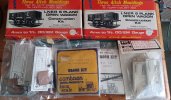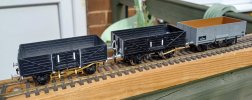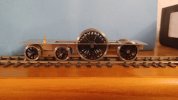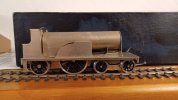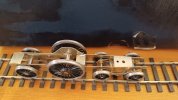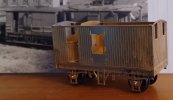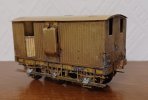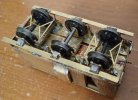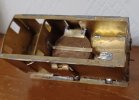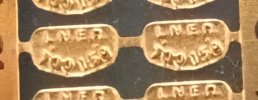stuartp
Active Member
Well it's been a while ...
Midland Railway D516 Luggage Composite, converted to a Breakdown Train Riding Van:
In 2020 'The True Line', the journal of the Caledonian Railway Association, published a short article by George Russell on the 6 wheeled tool vans and riding vans built by the CR in the 1920s. This is not one of those (but watch this space...). One of the photos shows a CR tool van at Dumfries in the 1960s coupled to a rather un-Caledonian looking 6 wheeled coach. The CRA Forum identified it as a Midland Railway D516 luggage compo, it appears to have survived until the shed closed in 1966, and close inspection of photos and the drawing on the LMS Society website suggested it could be bashed from the Ratio brake third. This should be visible without nneeding to log in - Breakdown Vans - Caledonian Railway Association Forum
One of the photo captions in the G&SWR volume of 'LMS Engine Sheds' reveals that when not required for breakdowns it doubled as thd shed roster clerk's office!
This is the kit side marked out for cutting ...
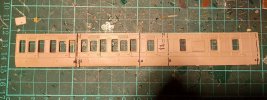
... and glued back together in a different order:
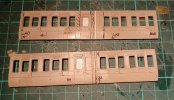
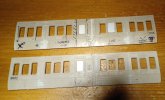
However, it was 7mm short, the deficiency being between the inner first class and outer third class compartments. The panelling is of course wider to accommodate the wider first class compartment and I'd hoped I could get away with it. No matter, more sawing and a couple of slivers of scrap side were inserted. Most of the saw cuts were up the middle of panels, the damage being made good by filling then scraping back with a curved X-Acto blade before sanding with a slice cut from a fingernail sanding stick. Fortunately the real coach had acquired a lot of extra beading by the 1960s, none of it particularly symmetrical or even straight, so the worst of the remaining scars will be hidden.
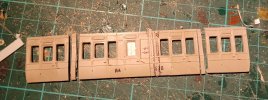
All the moulded door furniture except the hinges was removed and will be replaced on those doors which survived conversion. The lower panelling was also scribed to represent the tongue and grooved boarding repairs. It sits on Bill Bedford sprung W irons (a first for me), blu-tacked on for now !
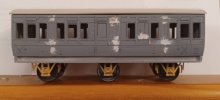
Midland Railway D516 Luggage Composite, converted to a Breakdown Train Riding Van:
In 2020 'The True Line', the journal of the Caledonian Railway Association, published a short article by George Russell on the 6 wheeled tool vans and riding vans built by the CR in the 1920s. This is not one of those (but watch this space...). One of the photos shows a CR tool van at Dumfries in the 1960s coupled to a rather un-Caledonian looking 6 wheeled coach. The CRA Forum identified it as a Midland Railway D516 luggage compo, it appears to have survived until the shed closed in 1966, and close inspection of photos and the drawing on the LMS Society website suggested it could be bashed from the Ratio brake third. This should be visible without nneeding to log in - Breakdown Vans - Caledonian Railway Association Forum
One of the photo captions in the G&SWR volume of 'LMS Engine Sheds' reveals that when not required for breakdowns it doubled as thd shed roster clerk's office!
This is the kit side marked out for cutting ...

... and glued back together in a different order:


However, it was 7mm short, the deficiency being between the inner first class and outer third class compartments. The panelling is of course wider to accommodate the wider first class compartment and I'd hoped I could get away with it. No matter, more sawing and a couple of slivers of scrap side were inserted. Most of the saw cuts were up the middle of panels, the damage being made good by filling then scraping back with a curved X-Acto blade before sanding with a slice cut from a fingernail sanding stick. Fortunately the real coach had acquired a lot of extra beading by the 1960s, none of it particularly symmetrical or even straight, so the worst of the remaining scars will be hidden.

All the moulded door furniture except the hinges was removed and will be replaced on those doors which survived conversion. The lower panelling was also scribed to represent the tongue and grooved boarding repairs. It sits on Bill Bedford sprung W irons (a first for me), blu-tacked on for now !

Last edited:

